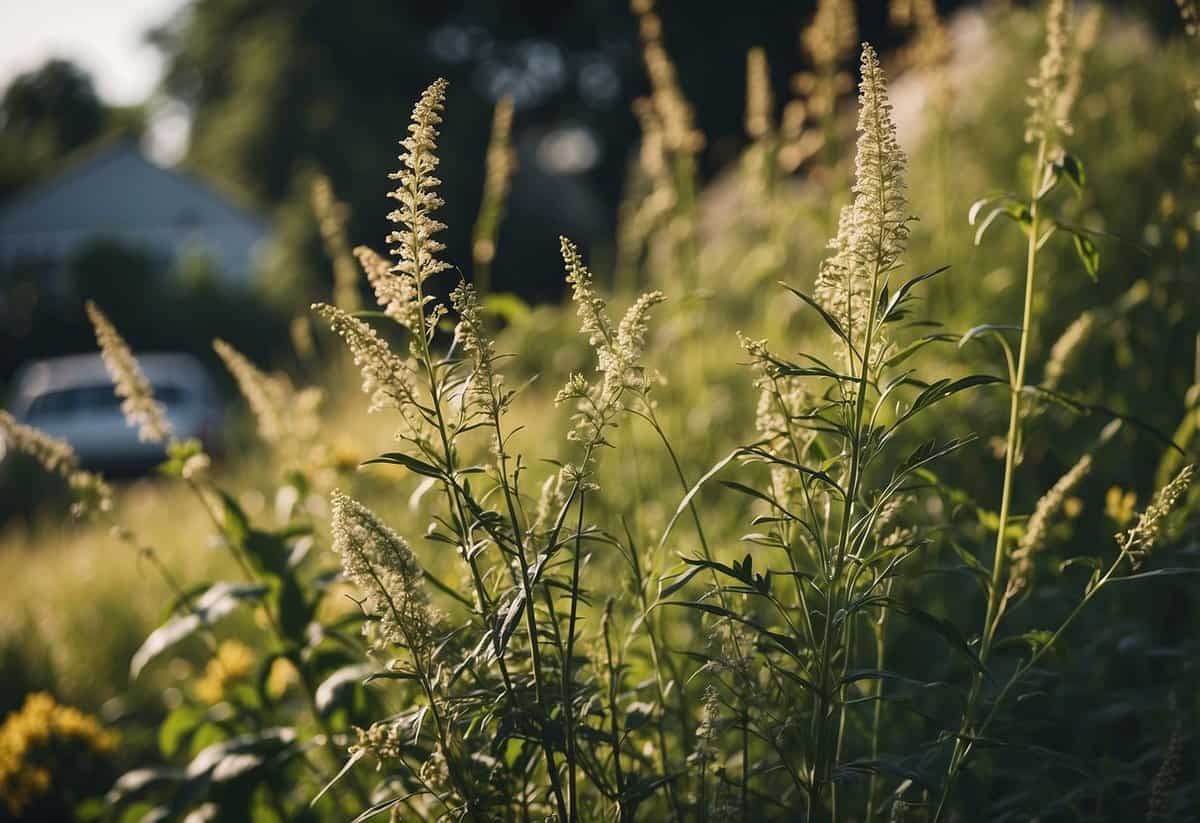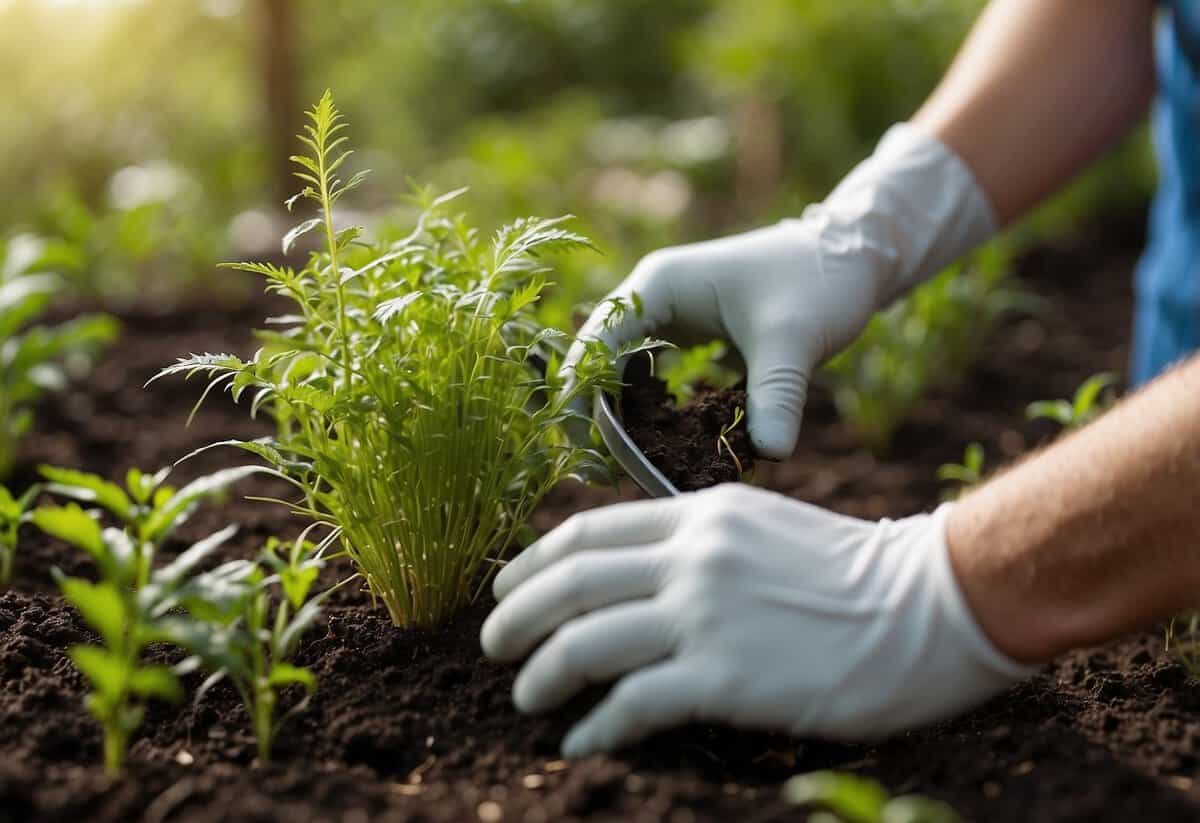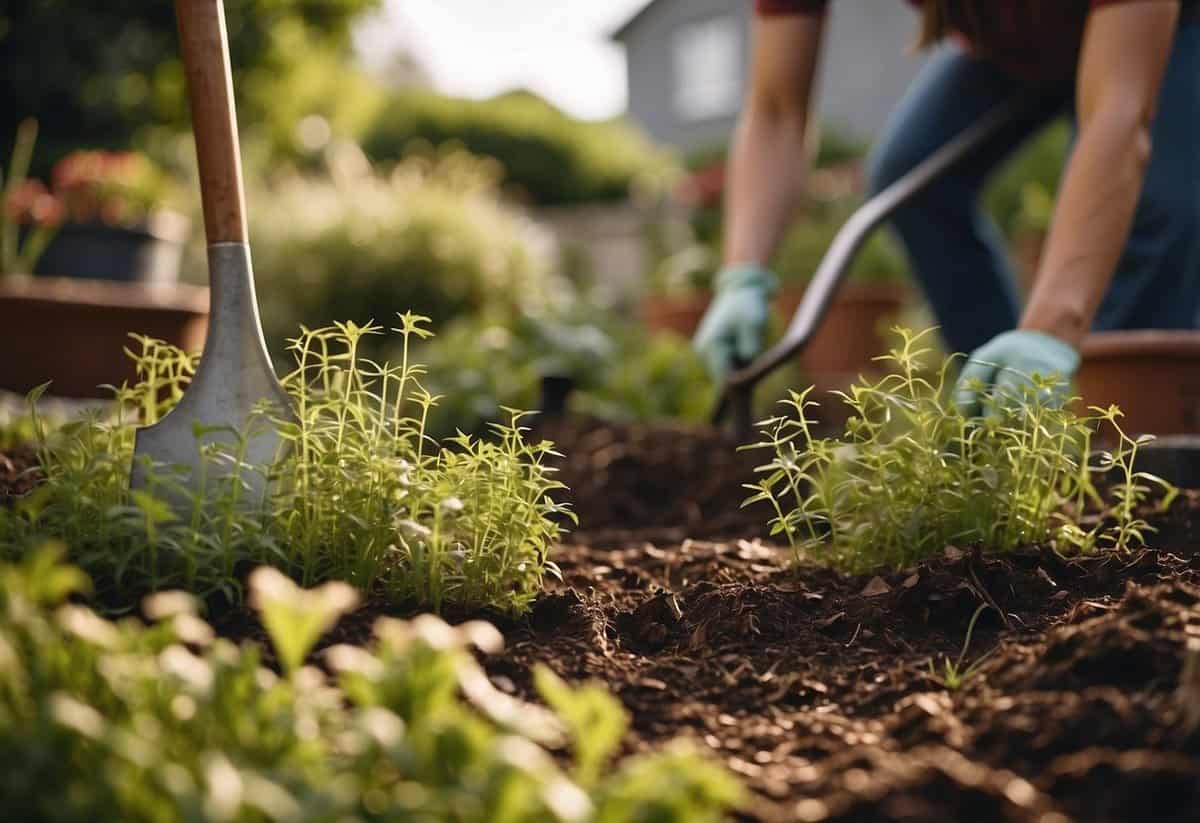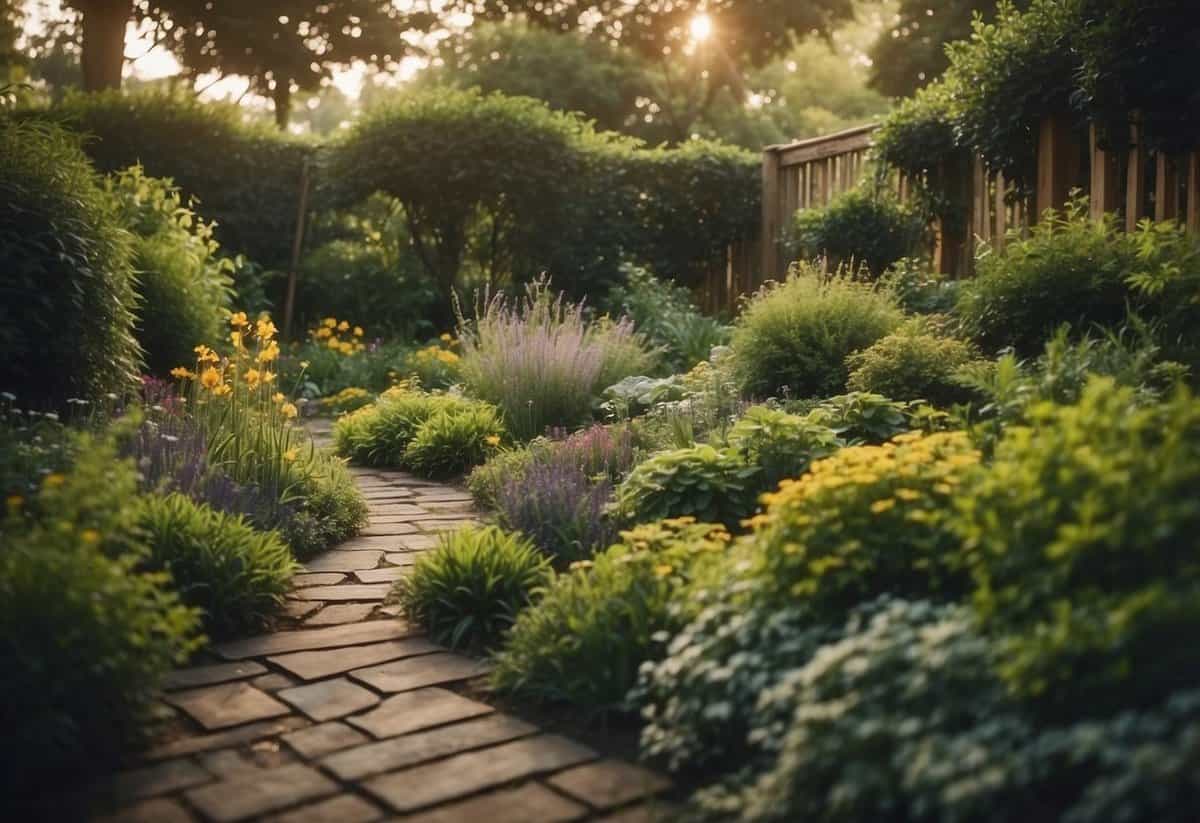Is It Worth Pulling Weeds: A Time-Saving Guide for Gardeners
When you look at your lawn or garden, the sight of weeds can be frustrating. You might wonder if you should pull them out by hand or find another method. Pulling weeds can be effective for smaller gardens and areas around delicate plants, but it can also be time-consuming and require a lot of effort.

The key to making weed pulling worthwhile is removing the entire root to prevent regrowth. Working with wet soil makes the task easier, as roots come out more smoothly. You can also use tools to aid in the process, making it less daunting and more manageable.
Alternatively, if pulling weeds feels like a waste of time to you, there are other methods like using chemical herbicides or planting cover crops, which can compete with weeds for resources. Ultimately, it’s about finding what works best for you and your garden’s needs. Whether you decide to pull weeds or try another method, maintaining a weed-free garden is achievable.
Understanding Weeds and Their Impact on Gardens

Weeds have a significant effect on your garden, from competing with your plants for nutrients to spreading rapidly if not controlled. Knowing the types of weeds and their characteristics can help you manage them more effectively.
Types of Weeds: Annuals and Perennials
Weeds can be categorized into annuals and perennials. Annual weeds complete their life cycle in one year. They grow from seeds, mature, produce new seeds, and die within the same year. Common examples include crabgrass and chickweed.
Perennial weeds, like dandelions, live for more than two years. These weeds have strong root systems that allow them to survive through seasons. They often have taproots or rhizomes, making them harder to eliminate. Understanding whether you’re dealing with annual or perennial weeds helps in choosing the right control strategy.
Weeds and Their Effects on Plant Growth
Weeds compete with your garden plants for essential resources such as water, nutrients, and sunlight. This competition can stunt the growth of your desired plants. Weeds can also host pests and diseases that might spread to your plants.
Some weeds release chemicals into the soil that inhibit the growth of nearby plants. This process, known as allelopathy, can harm your garden even further. Keeping your garden weed-free ensures that your plants get the best chance to thrive without unnecessary competition.
Root Systems: The Vital Target
Weeds have varying root systems, which are crucial to understanding how to remove them effectively. Perennial weeds often have deep roots or rhizomes, which are underground stems that can spread quickly. If these roots are not completely removed, the weed can regrow.
Annual weeds typically have shallower root systems, making them easier to pull out entirely. When you pull weeds, especially perennials, aim to get as much of the root system out as possible to prevent them from coming back. Moist soil conditions make this easier, as highlighted by expert advice.
Addressing the root system, whether deep roots or rhizomes, is key to effective weed management. This helps ensure that your garden remains healthy and less cluttered with unwanted plants.
Pulling Weeds: Techniques and Tools

Weed control can be challenging. Knowing the right methods and using the proper tools can make your gardening tasks more manageable and effective.
Hand-Pulling Techniques for Small Weeds
Hand-pulling is best for small weeds, especially when the soil is soft and moist. Grip the weed firmly at the base close to the soil. This ensures that you pull out the entire root system without breaking it.
Use gloves to protect your hands from rough or thorny weeds. Regular checks will prevent overgrowth, making future hand-pulling easier.
You can also use a small garden spade or trowel to loosen the soil around the base of the weed. This helps you extract the weed more effectively.
Using Tools for Stubborn Weeds
For larger or deeper-rooted weeds, use specialized weeding tools. A hoe is excellent for cutting through roots and removing large patches of weeds.
A garden fork can lift out tough weeds without disturbing other plants. A trowel or weeding tool can help dig out weeds with long taproots.
Do not forget to clean and sharpen your tools regularly. This keeps them efficient and makes your work easier. Stubborn weeds may require repeated efforts, so be patient.
Choosing the Right Time: Wet Soil and Growth Patterns
Timing is crucial for effective weeding. Pulling weeds is easiest when the soil is wet. Moist soil loosens the roots, making it simpler to extract the entire weed.
Rainy days are perfect for weeding. If rain is not expected, you can soak the soil yourself with hose water before you start.
Monitor your garden to understand the growth patterns of different weeds. Early morning or late afternoon, when the sun is not too harsh, are ideal times for weeding. This can help you maintain a healthier garden without much stress.
Preventive Measures and Alternatives to Pulling

To manage weeds without the hassle of constant pulling, you can use several effective methods. These include mulching, chemical control, and planting cover crops or ground cover plants.
Mulching: Organic and Plastic Options
Mulch is a great way to prevent weeds. Organic mulch includes materials like straw, grass clippings, and wood chips. It helps keep soil moist and blocks weed growth. Organic mulch also adds nutrients to the soil as it breaks down.
Plastic mulch is another option. It creates a physical barrier that keeps weeds from sprouting. However, plastic mulch doesn’t break down like organic options and might need to be replaced over time. It’s best for larger gardens where replacing mulch is less frequent.
Each type of mulch has its pros and cons, but both can effectively reduce weed growth and save you time and effort in your garden.
Chemical Control: Herbicides and Homemade Solutions
Herbicides are chemical weed killers that can be either pre-emergent or post-emergent. Pre-emergent herbicides stop weed seeds from germinating and should be applied early in the growing season. These are best for preventing new weeds.
Post-emergent herbicides kill weeds that are already growing. These can be more targeted and effective for existing weeds. Always follow the application instructions carefully to avoid damaging your plants.
If you prefer homemade solutions, a mix of vinegar and salt can act as a powerful weed killer. Spray it directly onto the weeds for best results. Just be cautious—this mixture can also harm other plants and soil health if not used carefully.
Cover Crops and Ground Cover Plants
Cover crops like clover and rye can crowd out weeds. They grow quickly and cover the soil, preventing weed seeds from getting the sunlight they need to sprout. Cover crops can also improve soil health by adding organic matter and nutrients.
Similarly, ground cover plants like creeping thyme or vinca minor provide dense coverage. These low-growing plants spread quickly and can form a natural barrier against weeds. Once established, they require minimal maintenance and can be a long-term solution for weed control.
By using these methods, you can reduce the need for pulling weeds and keep your garden healthy and thriving.
The Environmental and Health Benefits of Weed Control

Weed control has important benefits for both the environment and your health. By using organic methods and enjoying physical exercise, you support a sustainable ecosystem and improve your well-being.
Organic Weed Control Practices
Using organic matter like mulch helps prevent the spread of weed seeds. Mulch blocks light, so new weeds can’t grow easily. Another method is hand-pulling weeds, which doesn’t require harmful chemicals.
This way, you protect the environment and keep your garden safe for wildlife. Combining mulch with other natural weed control methods like covering the soil with newspaper or cardboard also works well. These materials decompose, adding nutrients back to the soil.
Organic weed control practices are effective and environmentally friendly. They maintain soil health and support biodiversity without using expensive herbicides.
Physical Exercise in Gardening
Gardening and pulling weeds provide great exercise. When you pull weeds, you use many muscles in your body, improving strength and flexibility. This physical activity also helps burn calories, making it a good workout.
Spending time in your garden reduces stress and boosts mood. The act of gardening gets you outdoors, where you can enjoy fresh air and sunshine. This helps your body produce Vitamin D, which is essential for bone health.
Gardening and weed control offer both physical and mental health benefits. Not only do you get to enjoy a beautiful garden, but you also improve your overall well-being.
Assessing the Value of Weed Management

Pulling weeds has both benefits and drawbacks. It’s about finding the right balance between the time you invest and the results you achieve in your garden.
Weed Pulling as a Temporary vs. Long-Term Solution
Pulling weeds can be an effective short-term fix. When you pull weeds, you immediately remove the competition for your plants. This allows your grass and plants to get more nutrients, water, and sunlight.
If you only pull the visible parts of the weeds, they can grow back. Many weeds have deep roots that need to be fully removed. Otherwise, you might see them sprouting again soon after you thought you got rid of them.
On the other hand, consistent and thorough weed pulling can help manage weed problems long-term. Regularly removing weeds before they seed can reduce their spread. This means you’ll likely spend less time dealing with weeds in the future.
Balancing Time Investment with Gardening Goals
Weed pulling can be time-consuming, but it doesn’t have to be a waste of time if managed well. If maintaining a pristine garden is your goal, spending time on weeding might be necessary.
However, for those who prefer a low-maintenance approach, other methods might be worth considering. For instance, mowing the lawn regularly can help keep weeds under control. Using mulch can also suppress weed growth, reducing the need for frequent pulling.
When deciding if weed pulling is worth your time, think about how much effort you’re willing to invest in lawn care. Balancing your time between weeding and other gardening tasks can make your gardening experience more enjoyable and efficient.
For many gardeners, the advantages of pulling weeds, such as immediate results and giving your plants more space, outweigh the disadvantages.







